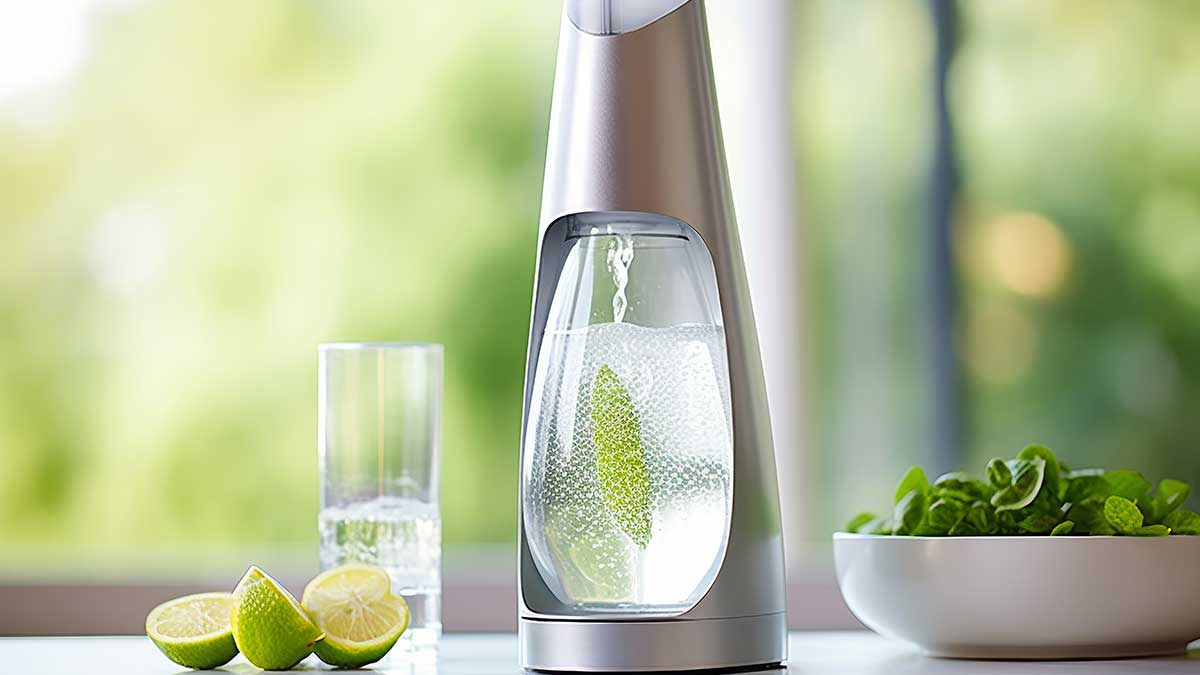
Readers have asked many times about the sustainability of home soda dispensers. More households are choosing soda machines to reduce plastic bottle use, and Consumer Reports found these systems more than pay for themselves in savings after about two years. But are the CO2 gas and canisters sustainable?
As we all know, CO2 is the gas warming the atmosphere — there is 50% more of it than before the Industrial Revolution, which has heated the planet by 2.1 degrees Fahrenheit, according to NASA.
The CO2 used in these canisters is often derived from industrial sources, such as the by-products of ammonia or natural gas production. This means that while the CO2 is not directly released into the atmosphere, it is still a by-product of fossil fuel consumption. We borrow the CO2 for the bubbles in our soda, and the body expells it by breathing — it is not a significant source of global warming.
Companies like SodaStream do not explicitly detail the carbon footprint of their CO2, but it is clear that the gas comes from industrial sources.
Canister Circularity
The question of how to responsibly recycle CO2 canisters is becoming increasingly relevant, as more than $800 million worth of machines and canisters are sold annually.
Most CO2 canisters for home soda machines are made from aluminum, a highly recyclable material. However, recycling these canisters isn’t as straightforward as tossing them in your curbside recycling bin. Because they are pressurized, CO2 canisters pose safety risks in the recycling process. They can rupture and potentially damage sorting equipment, which also creates hazards for recycling facility workers. Consequently, you won’t find local curbside programs accepting these pressurized items.
Finding a local drop-off option for recycling CO2 canisters can also be challenging. The risk of canisters bursting when crushed is significant, which is why many recycling centers are hesitant to accept them. Before attempting to drop off canisters, it’s crucial to contact local facilities to confirm whether they can safely handle them.
Manufacturer Exchange Programs: A Sustainable Alternative
The good news is that many CO2 canister manufacturers recognize these challenges and offer exchange programs. These programs are not only safer but also more sustainable. Reusing canisters is typically less resource-intensive than producing new ones from scratch. Here are some exchange programs offered by various brands:
Many retail outlets, including CVS, Target, True Value, and Best Buy, also offer local exchange services. However, we recommend calling ahead to ensure the store participates in the exchange program.
While no canister makers are currently known to use naturally sourced CO2, you may want to ask your CO2 provider. This inquiry not only promotes transparency but also encourages companies to consider more sustainable practices.
If you have questions or find out more about your canister refill company’s CO2 sources, please let us know. Your input helps us all make more informed and environmentally responsible choices.
- SEO Powered Content & PR Distribution. Get Amplified Today.
- PlatoData.Network Vertical Generative Ai. Empower Yourself. Access Here.
- PlatoAiStream. Web3 Intelligence. Knowledge Amplified. Access Here.
- PlatoESG. Carbon, CleanTech, Energy, Environment, Solar, Waste Management. Access Here.
- PlatoHealth. Biotech and Clinical Trials Intelligence. Access Here.
- Source: https://earth911.com/how-to-recycle/using-and-recycling-co2-canisters-from-home-soda-machines-what-you-need-to-know/
